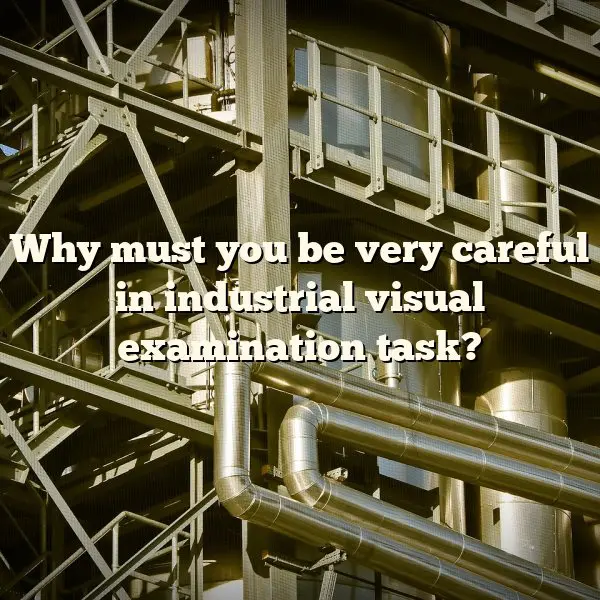This article defines staff qualification, equipment, procedures and certification for visual examination in third party inspection (TPI Inspection) services according to job specifications and customer requirement for general use. The personnel in charge of Non-Destructive Testing, visual and dimensional controls must have a good knowledge and experience in fabrication and manufacturing processes and are subject to periodical sight testing.
Surfaces are two types: the first one is a smooth surface. This includes flanges and pipes. The other is called a rough surface. These include welds, rough coatings and rough forged parts. These may be available in brushed, grounded, raw, sand-blasted or machined conditions. The visual examination is performed suitably with the use of correct devices and by means of controlled observation.
The area under inspection must have at least 600 mm distance from inspector eyes. The angle is necessary to be 30 degree. The inspection surface must have a condition that allow easy inspection and possible to detect visible defects like corrosion, cracks and scratches.
When examining a welding the examination needs to be very thorough. The inspection must be in a way to detect probable defects such as under cutting, slag inclusion or craters.
The actual examination that is based on national and international standards for the weld and surface examination processes are classified as below:
Critical indications: Those indications that, according to the third party inspector and industrial vendor Inspector evaluation, may be detrimental for the correct use/destination of the examined system, piece of equipment and/or individual component.
Major indications: Those indications that, according to the third party inspector / vendor inspector evaluation, may affect or reduce the operation characteristics of the examined system, piece of equipment and/or individual component.
Minor indications: These are the conditions found by the third party inspector or the vendor inspector evaluation which in any way do not have any effect on the correct use or destination of the system that needs to be examined or an equipment piece and/or individual component.
In this regard the lighting in the inspection room must be of optimum quality. It can either be naturally lit or artificially provided but it should be sufficient to carry out the inspection procedure according to the standards which have been set. This makes the required amount of light close to 500 LUX. The contrast can be suitably adjusted when a black line drawn on a grey sheet positioned to the area of examination can be seen with clarity. The black line should be at least 0.8 mm in thickness.
The acceptability limits of the defect are dependent on the applicable specification and/or the requirements of the customer. Dimensional controls are carried out by the inspector right from the start, and material receiving inspection is very important item and must be done based approved inspection and test plan.
Materials, components or pieces of equipment subjected to dimensional control are positioned in a way so as to allow the best possible control conditions. Dimensional controls are carried out only by instruments, equipment and means previously inspected and accepted by the manufacturer quality control department.
All the measurements which are done are marked by the use of a red pencil on the inspectors drawing copy. All these measurements should match with the specifications of the customer. The schedule for sampling of these products is conforming to the international standards if they are applicable in the case.
Upon completion of the visual examination by the TPI inspector, then issues a visual and/or dimensional check certificate. This certificate gives out the date of examination, the examination technique (which can be direct or indirect) applied in addition to all identification references for the area concerned, the component or the equipment piece that is a subject to be examined and signed for performance.
All defects that detected in the visual inspection process regardless to acceptance or rejection must be reported and stated in the certificate.
For more detailedinformation in this content, please visit Industrial Equipment Inspection . There are many articles that can guides you in this field.

